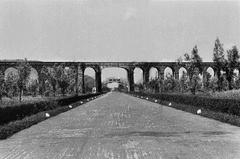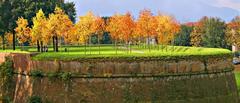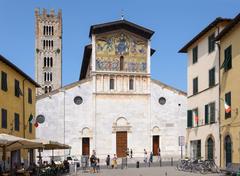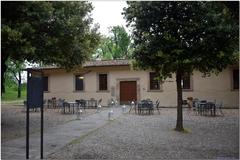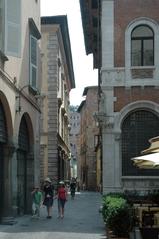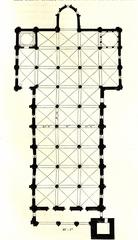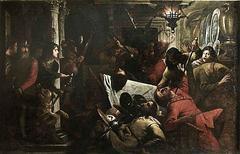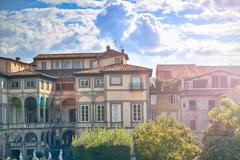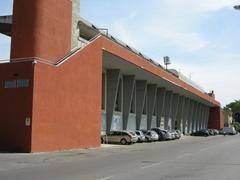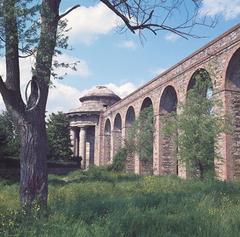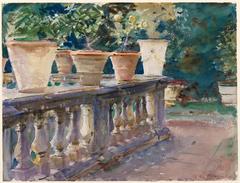Palazzo Fatinelli Lucca: Visiting Hours, Tickets, and Historical Significance
Date: 14/06/2025
Introduction
Palazzo Fatinelli, nestled in the heart of Lucca’s historic center, is a distinguished emblem of the city’s medieval and Renaissance legacy. Once home to the influential Fatinelli family, the palazzo offers visitors a unique immersion in centuries of architectural evolution and social history. Its façade—blending Romanesque and early Renaissance styles—and richly adorned interiors offer a window into the craftsmanship and aristocratic life that helped shape Lucca’s cultural landscape.
Following significant restoration efforts, most notably completed in 2025, Palazzo Fatinelli now combines authentic historical features with modern amenities for enhanced accessibility and visitor experience. The palazzo’s connection to Santa Zita, Lucca’s beloved saint, further enriches its spiritual and cultural significance. Strategically located near major landmarks such as the Renaissance walls, Torre Guinigi, and the Basilica di San Frediano, Palazzo Fatinelli is an essential stop for travelers seeking to experience Lucca’s architectural marvels and living traditions (Palazzo Fatinelli Official Site; Italian Traditions; Nomads Travel Guide; Lucca in Diretta).
Table of Contents
- Origins and Architectural Evolution
- The Fatinelli Family and Lucchese Society
- Cultural Significance and Urban Context
- Artistic and Architectural Features
- Visiting Palazzo Fatinelli: Hours, Tickets, and Tours
- Practical Visitor Tips
- Restoration Efforts and Heritage Preservation
- Accessibility and Amenities
- Nearby Attractions
- Special Events and Seasonal Tips
- Frequently Asked Questions (FAQ)
- Conclusion and Recommendations
- Sources and Further Reading
1. Origins and Architectural Evolution
Palazzo Fatinelli reflects Lucca’s layered history, from Roman origins through the Middle Ages and into the Renaissance. While its exact construction date is debated, architectural evidence and its location within the historic core suggest late medieval or early Renaissance origins. The building’s façade features the restrained elegance characteristic of Lucchese architecture: robust stone and brickwork, arched and rectangular windows, and ornate cornices, balancing defensive function and patrician prestige (Italian Traditions; Discover Walks).
The economic boom of the Renaissance, driven by the silk trade, enabled elite families like the Fatinelli to commission grand palaces. Inside, original frescoes, coffered ceilings, and period furnishings evoke the refined lifestyle of Lucca’s aristocracy.
2. The Fatinelli Family and Lucchese Society
Prominent in Lucca’s mercantile and civic elite, the Fatinelli family rose to influence during a period of oligarchic governance in the 17th century. Their roles in trade, banking, and local administration contributed to Lucca’s prosperity. Palazzo Fatinelli was not just a residence but a venue for social gatherings, political meetings, and cultural activities, reinforcing the family’s status and shaping the city’s identity (Italian Traditions).
3. Cultural Significance and Urban Context
Strategically situated near Lucca’s medieval walls, Roman Amphitheater, and a network of historic churches, Palazzo Fatinelli is deeply integrated into the city’s social and cultural fabric. The building’s presence during annual events like the Lucca Summer Festival and Lucca Comics & Games highlights its enduring role in community life (Italian Traditions).
4. Artistic and Architectural Features
Palazzo Fatinelli’s façade combines Romanesque and early Renaissance motifs—arched ground-floor windows, stone string courses, and a central portal bearing the family crest. The interior centers around a terracotta-paved courtyard with arcaded loggias, while the piano nobile features frescoed vaults, wooden beams, and stucco decorations (Nomads Travel Guide). Artisanship is evident in stone capitals, bas-reliefs, and intricate woodwork.
5. Visiting Palazzo Fatinelli: Hours, Tickets, and Tours
- Visiting Hours: Generally open Tuesday to Sunday, 10:00 AM–6:00 PM. Closed Mondays and major holidays. Hours may vary for special events—check the official website or local resources for current details.
- Tickets: Standard entry is €10 for adults; €7 for seniors/students; children under 12 enter free. Special exhibitions or guided tours may require additional fees.
- Guided Tours: Offered daily at scheduled times in Italian and English; private tours available by appointment. Advance booking recommended for thematic tours.
- Accessibility: Ramps and lifts have been installed, though some historic areas may have limited access (AccessibleItaly.it; Roaming Historian).
6. Practical Visitor Tips
- Visit during major events such as the Festa di Santa Zita (April 27) for a vibrant atmosphere.
- Combine your trip with nearby sites: Piazza dell’Anfiteatro, Torre Guinigi, Cathedral of San Martino, and Lucca’s Renaissance walls.
- Sample Lucchese specialties at local trattorias—tordelli, spelt soup, and buccellato (Italian Traditions).
- Use pedestrian-friendly routes and allow extra time for navigation, especially if you have mobility concerns.
7. Restoration Efforts and Heritage Preservation
The 2025 restoration of Palazzo Fatinelli, led by Professor Ugo Fava, exemplifies Lucca’s dedication to heritage preservation (Lucca in Diretta). Efforts included structural stabilization, conservation of historic materials, restoration of decorative elements, and sensitive integration of modern amenities for accessibility—all while maintaining the palazzo’s authentic character (Nomads Travel Guide).
8. Accessibility and Amenities
- Physical Accessibility: Ramps, lifts, and alternative entrances are available, though some historic features may pose challenges. Contact the palazzo in advance for tailored support (AccessibleItaly.it).
- Facilities: Cloakrooms, accessible toilets, seating, and multilingual support are provided. Wheelchairs may be available on request.
- Parking: Disabled parking is available near city gates; vehicles with a European Disabled Parking Permit may enter restricted zones for drop-off.
9. Nearby Attractions
- Torre Guinigi: Iconic tower with rooftop garden.
- Cathedral of San Martino: Home to art treasures and striking architecture.
- Renaissance Walls: Panoramic walks and scenic photography spots.
- Piazza dell’Anfiteatro: Historic oval piazza surrounded by cafes and shops.
10. Special Events and Seasonal Tips
- Festa di Santa Zita: April 27, with floral carpets and processions honoring the local saint (Welcome2Lucca; Toscana Ovunque Bella).
- Lucca Historiae Fest: Historical reenactments and citywide exhibitions in June (Lucca Whats On).
- Art and Music Festivals: Including the Sagra Musicale Lucchese and Puccini Festival.
- Lucca Antiques Market: Held monthly throughout the city.
Visiting during spring or autumn ensures mild weather and fewer crowds.
11. Frequently Asked Questions (FAQ)
Q: What are Palazzo Fatinelli’s opening hours?
A: Typically Tuesday–Sunday, 10:00 AM–6:00 PM; check the official site for updates.
Q: Is the palazzo accessible for wheelchair users?
A: Yes, with ramps and lifts, though some areas may have limitations.
Q: How can I book a guided tour in English?
A: Book via the tourist office, official site, or local operators such as Viator (Viator Accessible Tours).
Q: Are discounts available?
A: Yes, for students, seniors, children, and visitors with disabilities or companions.
Q: Is photography permitted?
A: Allowed in most areas, but flash and tripods may be restricted.
12. Conclusion and Recommendations
Palazzo Fatinelli is a jewel of Lucca’s historic center, embodying the city’s artistic, spiritual, and architectural heritage. Whether you are drawn by its Renaissance beauty, its links to Santa Zita, or its vibrant role in local events, the palazzo offers an enriching experience for all visitors. For the latest information, consult the official website and consider downloading the Audiala app for curated tours and insider tips.
Explore more of Lucca’s treasures by combining your visit with the city’s other landmarks, and immerse yourself in its ongoing traditions and community life.
13. Sources and Further Reading
- Palazzo Fatinelli Official Site
- Italian Traditions
- Nomads Travel Guide
- Lucca in Diretta
- Welcome2Lucca
- Toscana Ovunque Bella
- Turislucca
- Eupedia
- Roaming Historian
- AccessibleItaly.it
- Viator Accessible Tours
- Lucca Whats On
